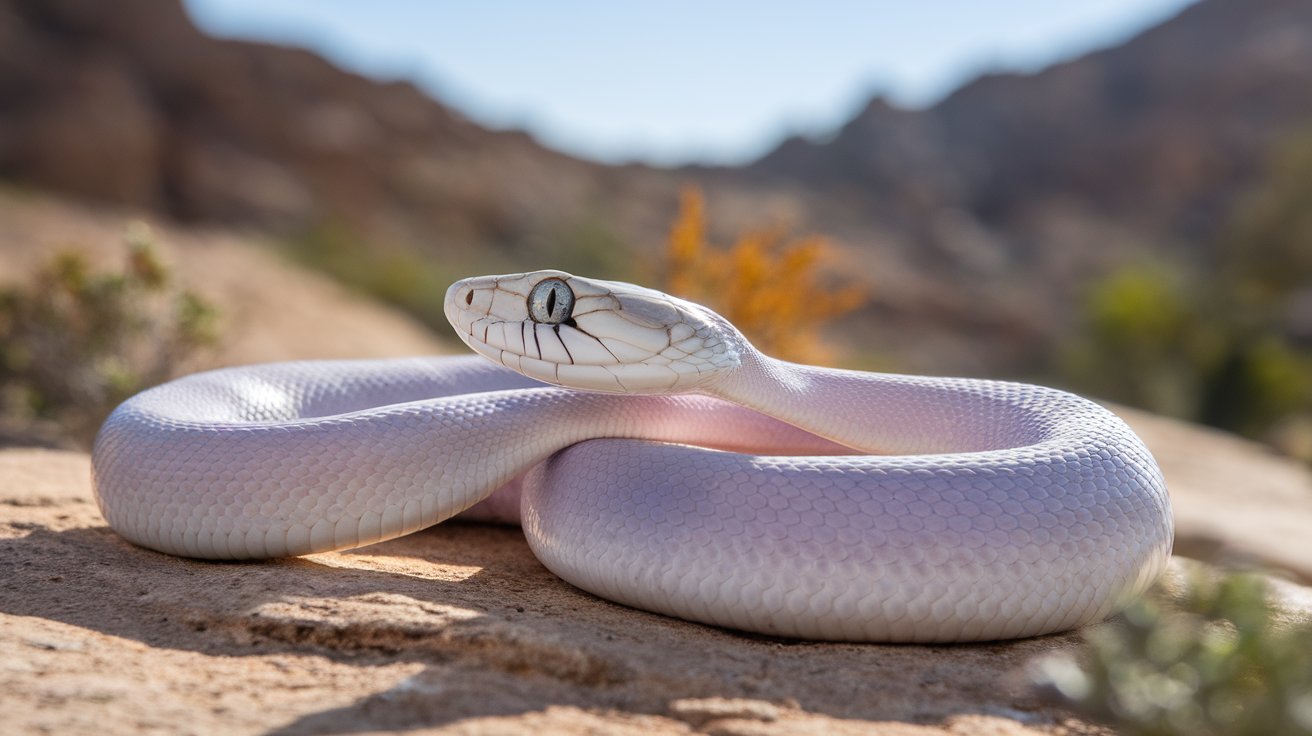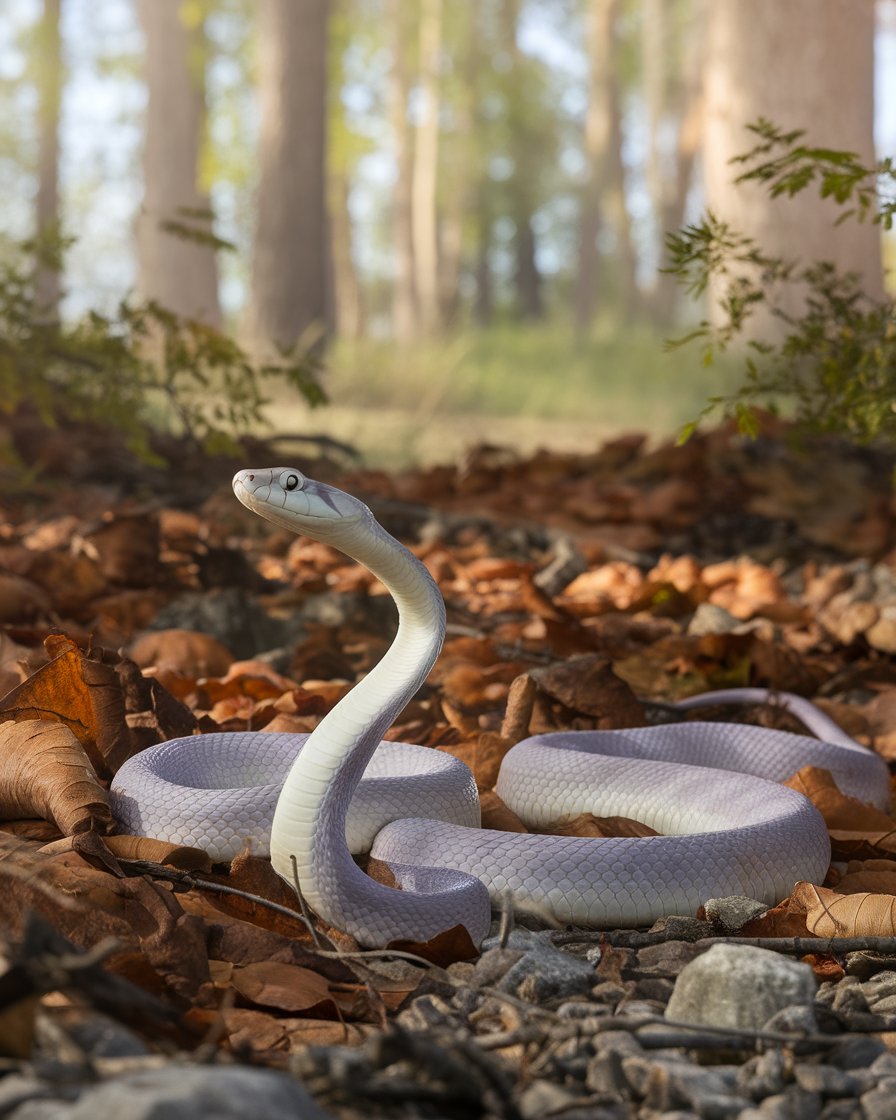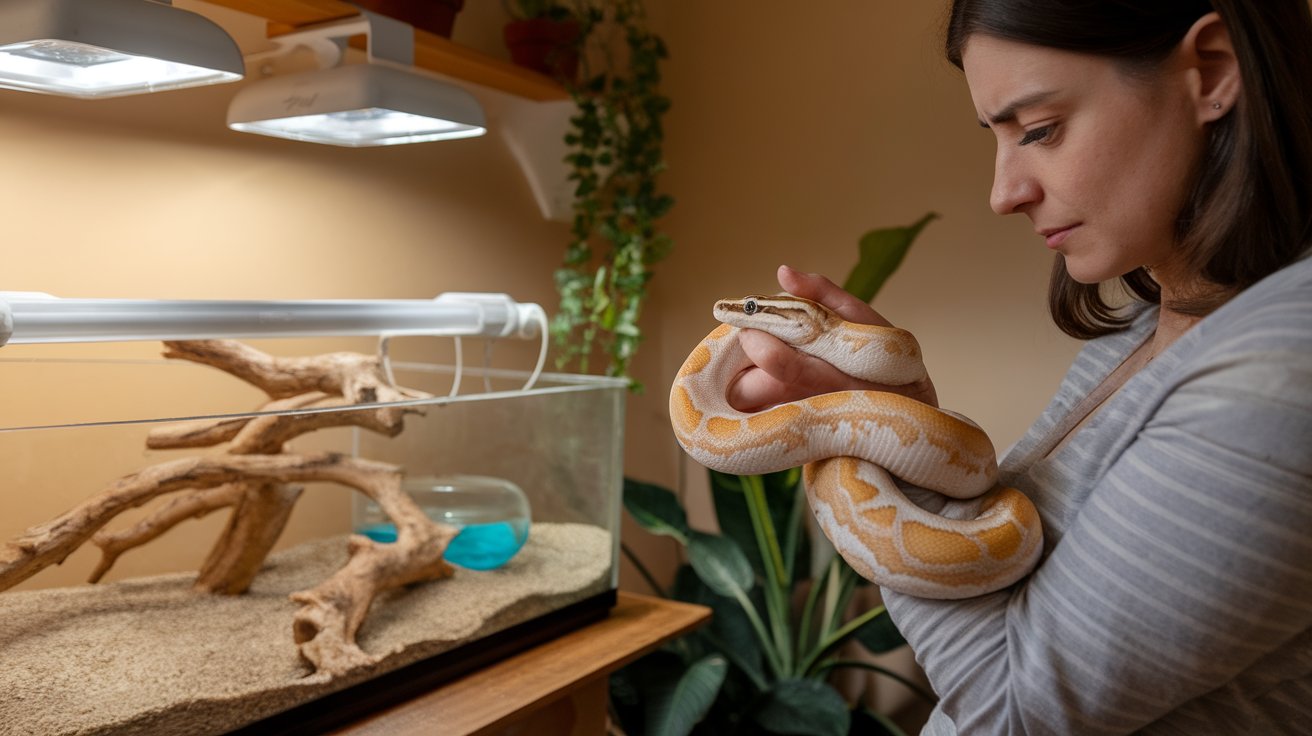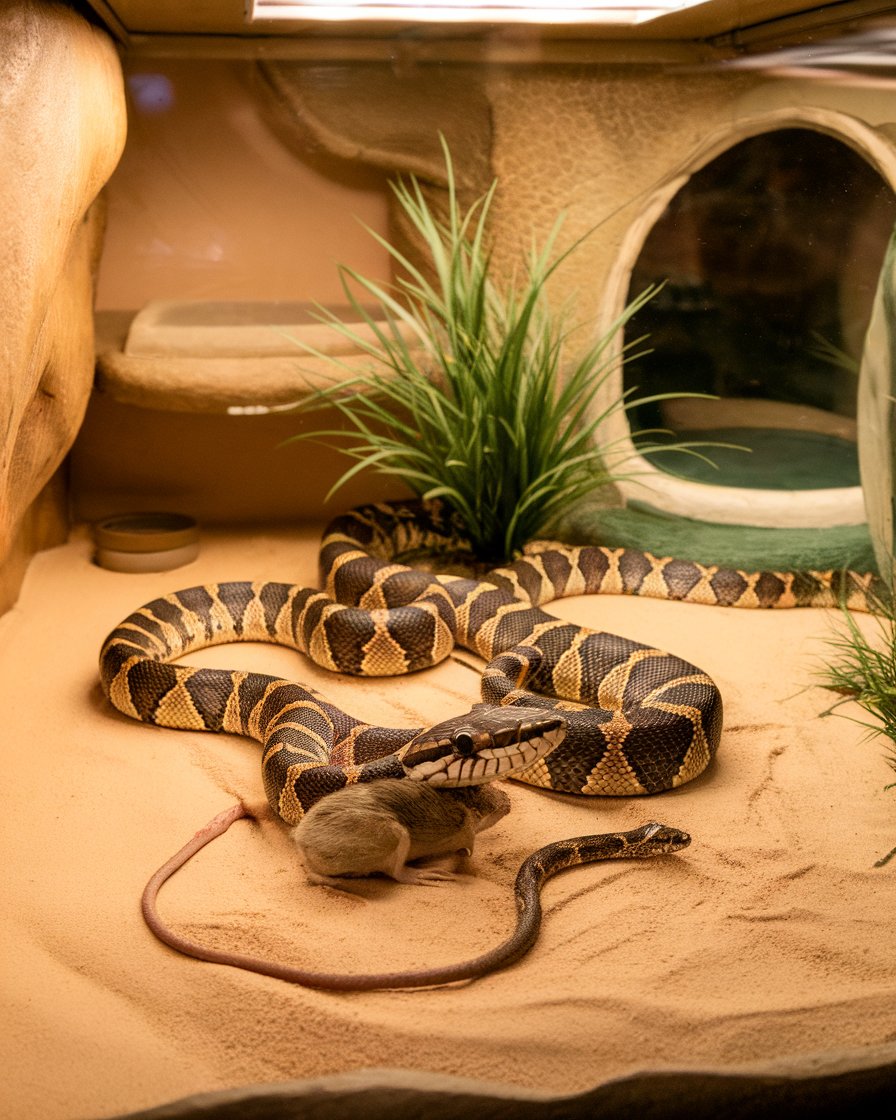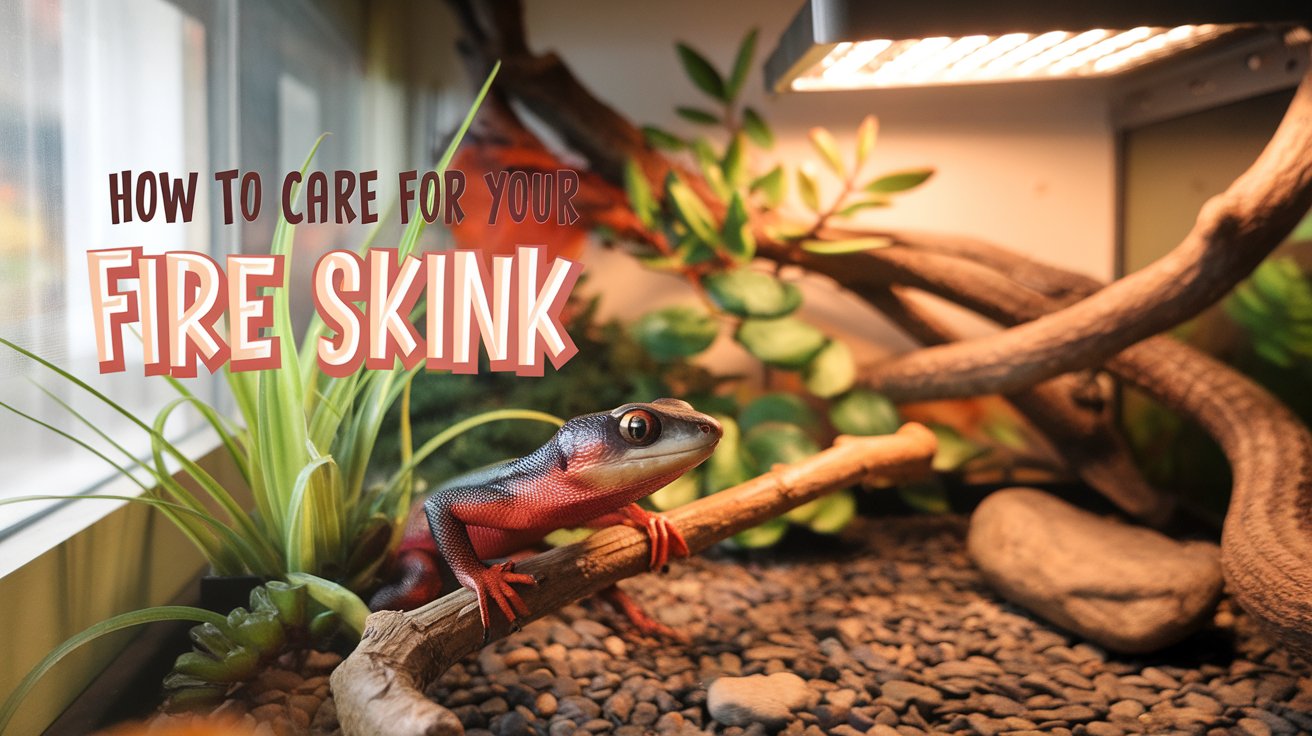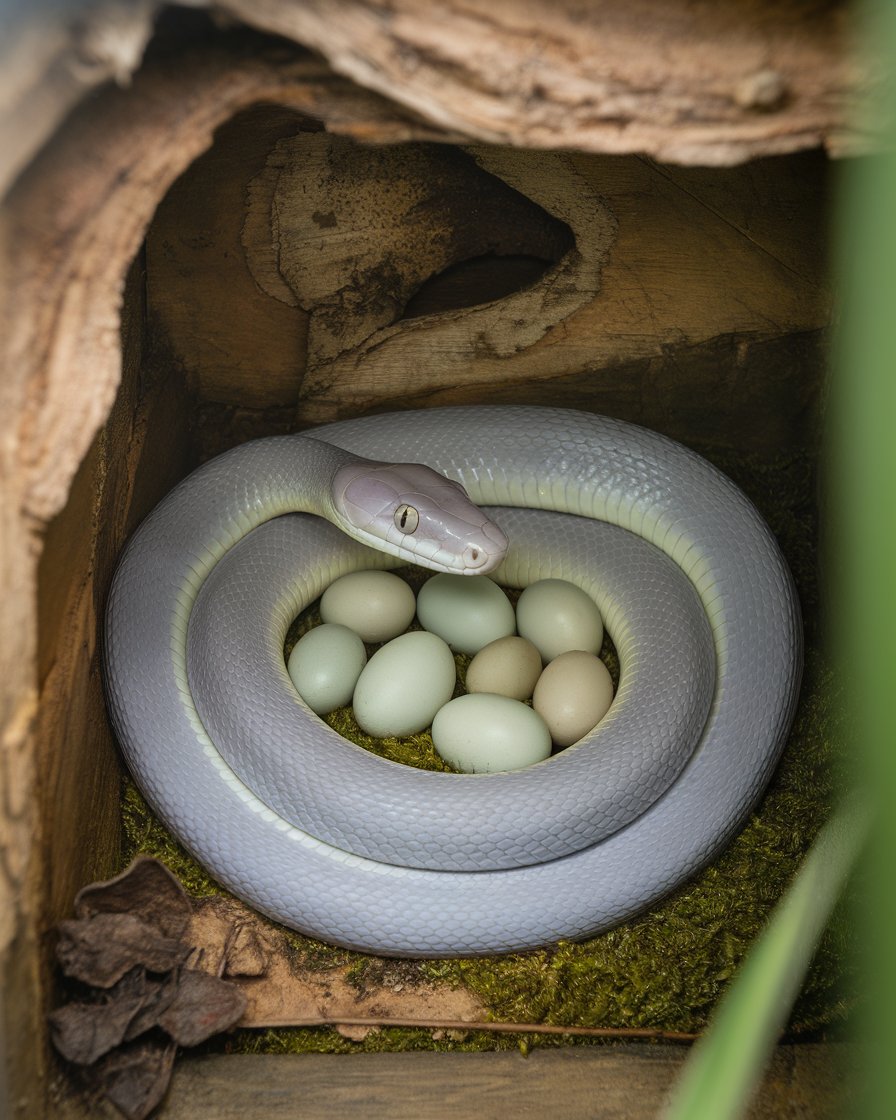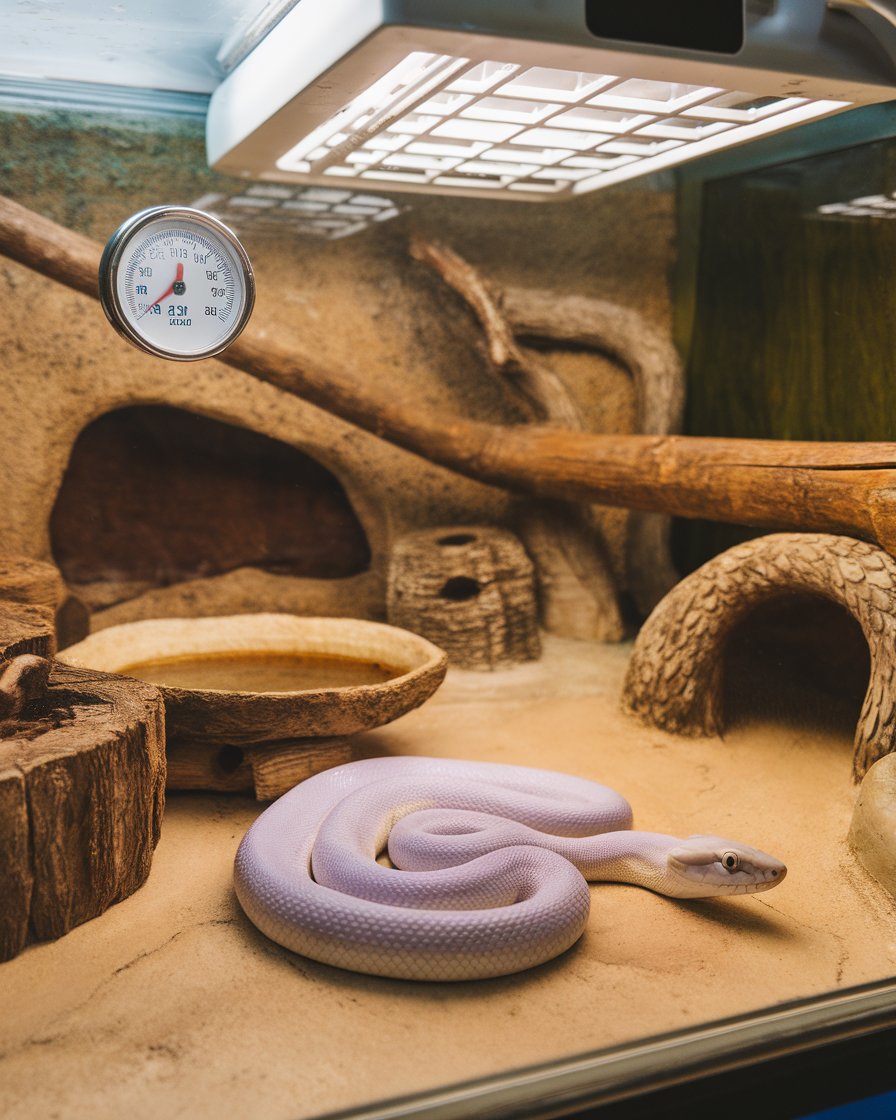Introduction
The Lavender Albino Florida King Snake is a fascinating species known for its stunning appearance and adaptability. This species, part of the Lampropeltis getula floridana group, thrives in various environments, from the wild to captivity. Their unique coloration, a mix of lavender and white bands, makes them visually striking and a favorite among snake enthusiasts. These snakes are known for their docile temperament, which makes them easier to care for than other reptiles. For those interested in owning one, it’s important to learn about their natural habitat and care requirements to ensure they live long, healthy lives.
In the wild, these king snakes are highly adaptable, often found in diverse habitats like woodlands and grasslands. Their ability to thrive in such environments relates to their strong hunting instincts, as they prey on rodents and small animals. Understanding their behavior and dietary needs is essential, whether you’re researching them or looking for king snakes for sale. With proper care, their future in captivity can be as bright as their vivid coloration.
Key Takeaways
- Lavender Albino Florida King Snakes thrive in diverse environments, including woodlands, grasslands, and wetlands.
- These snakes are known for their striking lavender and white coloration, which helps them blend into their surroundings.
- In captivity, providing the correct temperature, humidity, and hiding spots is essential for their health and well-being.
- Florida King Snakes are opportunistic predators, feeding on small mammals, birds, and reptiles.
- Regular feeding and a balanced diet are key to maintaining their growth and energy levels in captivity.
- Proper care, including regular health monitoring and enclosure maintenance, ensures that these snakes live long, healthy lives.
Habitat of the Lavender Albino King Snake
The Lavender Albino King Snake, known for its striking coloration and gentle demeanor, primarily resides in a variety of habitats across the southeastern United States. These snakes can adapt to environments such as grasslands, woodlands, and wetlands, where they find ample cover under leaf litter, rocks, or fallen logs. Their unique coloration, a blend of pale lavender and white bands, helps them blend into their surroundings. Although these snakes are generally non-aggressive, their vivid appearance can startle predators, giving them a chance to escape. In captivity, replicating their natural habitat ensures they remain healthy and stress-free, making them a favorite among snake enthusiasts.
Key Habitat Factors for California Adult Florida King Reptile Lavender Albino King Snake
Adaptability to Various Habitats
The Lavender Albino King Snake, particularly those found in California, are highly adaptable reptiles. They thrive in a variety of environments, from grasslands and woodlands to wetlands. This adaptability allows them to find shelter under leaf litter, rocks, and logs, providing them with the necessary cover for protection and hunting. Their lavender and white coloration also aids in camouflaging within their habitat, helping them avoid predators. For successful care in captivity, replicating these diverse natural conditions is crucial.Rocky and Forested California Habitat
In California, these snakes are often found in rocky areas, forested regions, and even desert edges. Their natural habitat provides them with both shaded areas and ample sunlight for thermoregulation. These snakes prefer environments where they can easily find hiding spots, such as under rocks or in small crevices. For snake enthusiasts keeping them in captivity, it’s important to mimic these conditions, providing hiding places and an environment with varying temperatures to ensure the snake feels secure and comfortable.Behavior and Care in Captivity
Lavender Albino King Snakes display calm and adaptable behavior, making them ideal pets for both beginners and experienced handlers. Their ability to grow up to four feet in length means that they need a properly sized enclosure with appropriate humidity and temperature control. These snakes thrive on a balanced diet of rodents, and regular handling helps them become accustomed to human interaction. Providing a clean, well-maintained enclosure with hiding spots ensures they remain healthy and stress-free in captivity, mimicking their natural habitat as much as possible.
Natural Habitat in California
Lavender Albino King Snakes, particularly the California kingsnake variety, thrive in the diverse climates of California. They are often found in rocky hillsides, forests, and desert edges where they have access to both sun and shade. These snakes seek out areas with abundant hiding spots, such as under rocks or in crevices, to protect themselves from predators and to ambush prey like small mammals or pinky mice. Despite their vivid appearance, they camouflage well within these environments, often making them hard to spot in the wild. For anyone looking to study or care for these snakes, it’s important to understand their natural need for both shelter and sun exposure.
Behavior in Captivity
In captivity, Lavender Albino King Snakes exhibit calm and adaptable behavior, making them excellent pets for both beginners and experienced snake handlers. These snakes are generally docile and can become accustomed to regular handling, reducing any initial fear they may have. However, proper care is essential to replicate their wild environment as closely as possible, ensuring the correct temperature, humidity, and hiding spots are maintained. A well-maintained enclosure allows the snake to thrive and grow to its full adult length, which can often exceed four feet. With the right care, these snakes live long, healthy lives, often developing a strong bond with their human handlers over time.
Diet and Feeding Habits of the Florida King Snake
The Florida King Snake, a member of the Lampropeltis getula species, is an opportunistic predator known for its diverse diet. In the wild, these snakes are skilled hunters, preying on small mammals, birds, and even other reptiles. Their adaptability allows them to thrive in various environments, from grasslands to wetlands. Using constriction to subdue prey, they are efficient and effective hunters. In captivity, replicating their natural diet is important to maintain their health and behavior. Understanding their feeding habits helps ensure they receive proper nutrition, which is crucial for their overall well-being and longevity.
Case Study: Feeding Schedule and Dietary Needs of the Florida King Snake in Captivity
A study conducted by the Florida Museum of Natural History examined the dietary habits of Lampropeltis getula, focusing on its feeding requirements in captivity. The research involved observing juvenile and adult Florida King Snakes over a period of 12 months to determine the impact of feeding frequency and prey size on the health of the snakes. Juvenile snakes were fed baby rodents (pinky mice) every 3 to 5 days, while adult snakes received appropriately sized mice or rat pups every 5 to 7 days. The study highlighted that snakes fed on a consistent schedule displayed better growth rates, higher energy levels, and less stress compared to those with irregular feeding patterns. By mimicking the snake’s wild diet and feeding habits, the research concluded that captive Florida King Snakes could maintain optimal health, longevity, and behavior, reinforcing the importance of replicating natural conditions in captivity.
Prey Items in the Wild
In the wild, Florida King Snakes primarily feed on a variety of animals, including rodents, birds, and smaller reptiles. They are known for their ability to overpower and consume prey through constriction, a natural method that allows them to capture animals larger than what might be expected for their size. Their diet can also include eggs, making them highly versatile predators. This adaptability helps them thrive across different ecosystems, where food sources may vary. King Snakes’ impressive hunting abilities and diverse dietary preferences make them one of the more resilient species in the wild, ensuring their survival in both harsh and favorable environments.
Feeding Schedule in Captivity
When kept in captivity, Florida King Snakes require a feeding schedule that mimics their wild diet as much as possible. Juvenile snakes should be fed more frequently, with baby rodents such as pinky mice being ideal. Adult snakes, on the other hand, thrive on a diet of appropriately sized mice or rat pups. A typical feeding schedule involves offering prey every 5 to 7 days. It’s crucial that the prey is thawed and not too large, usually the size of the snake’s midsection. Regular feeding and a balanced diet help ensure the snake’s growth, energy levels, and overall health are maintained over time.
Reproduction and Breeding of the Florida King Snake
The Florida King Snake, like many reptiles, follows a unique reproductive process that ensures the survival of its species. Mating usually occurs during the warmer months, with courtship starting in late spring or early summer. This timing aligns with optimal environmental conditions, giving the hatchlings a better chance of thriving. After mating, females lay their eggs in secure, hidden areas like decaying vegetation. The breeding habits of this species reflect their adaptability and resilience in both wild and captive environments. For snake breeders and enthusiasts, understanding their reproduction cycle is essential for ensuring healthy offspring.
Mating Behavior of King Snakes
During the breeding season, male Florida King Snakes engage in competitive behavior, often wrestling with each other to win the chance to mate. These contests can be intense, with the victor gaining access to a female. Once a suitable female is located, the male will approach, and if she is receptive, they will mate. The timing of this behavior in the spring and early summer aligns with favorable conditions for the development and hatching of eggs. This behavior is observed both in the wild and captivity, making it essential for breeders to recognize when their snakes are ready to reproduce.
Incubation Period for King Snake Eggs
After successful mating, a female Florida King Snake will lay anywhere between 5 and 20 eggs. These eggs are typically deposited in damp, warm environments like decomposing vegetation or secluded, well-insulated spots. The incubation period can last from 60 to 70 days, depending on temperature and humidity levels. Maintaining a stable environment is crucial for proper embryo development. After the incubation period, hatchlings emerge, already equipped with the instincts to hunt for prey and survive independently. For breeders, ensuring ideal incubation conditions is key to producing healthy, vibrant hatchlings that thrive in their new environment.
“Nature does not hurry, yet everything is accomplished.” – Lao Tzu
Health and Care Tips for Lavender Albino Florida King Snakes
Lavender Albino Florida King Snakes are captivating pets, but like all reptiles, they require proper care to thrive. These snakes are generally hardy, but attentive care is necessary to avoid common health issues. A well-maintained enclosure, appropriate diet, and regular health monitoring can ensure a long and healthy life. Owners should be mindful of temperature and humidity levels, as improper conditions can lead to health complications. Additionally, routine observation of their behavior and appearance is essential for early detection of any issues. Taking preventative measures and providing a comfortable environment are key to keeping these beautiful creatures in peak health.
Common Health Issues and Symptoms
Lavender Albino Florida King Snakes can experience a few common health problems, such as respiratory infections, mites, and shedding issues. Signs of respiratory problems may include wheezing, lethargy, or open-mouth breathing. Mites can cause visible irritation on the skin, leading to excessive rubbing or restlessness. Additionally, if the snake has trouble shedding its skin completely, this may indicate improper humidity levels in its enclosure. Regular check-ups with a reptile veterinarian are recommended to catch any early signs of illness. Keeping a close eye on your snake’s behavior and health will help ensure quick intervention if issues arise.
Proper Enclosure Setup and Maintenance
A well-maintained enclosure is critical for the health of Lavender Albino Florida King Snakes. The habitat should mimic their natural environment, providing both warm and cool areas to allow for proper thermoregulation. Ensure the temperature ranges from 75 to 85 degrees Fahrenheit and the humidity is kept at around 40-60%. Providing secure hiding spots is essential for the snake’s sense of safety. Regular cleaning of the enclosure helps prevent bacterial buildup, reducing the risk of infections. Lastly, feeding the snake appropriately sized prey, such as pinky mice, ensures they receive the proper nutrition needed for growth and vitality.
Conclusion
The Lavender Albino Florida King Snake is not only stunning but also highly adaptable, making it a popular choice among reptile enthusiasts. Their calm demeanor and easy-to-care-for nature, especially when provided with the right habitat, make them a great first reptile pet for beginners. Whether in the wild or captivity, their resilience is evident through their ability to thrive in diverse environments.
For those interested in the breeding process, these snakes follow fascinating rituals that ensure healthy offspring. Proper care, such as maintaining a clean enclosure and feeding appropriately-sized prey, is essential to their well-being. Understanding their needs and behaviors, whether you’re caring for a California King Snake or a Male Lavender Albino, helps create a harmonious experience. By providing a balanced environment, owners can enjoy a bright and long future with these captivating creatures.

